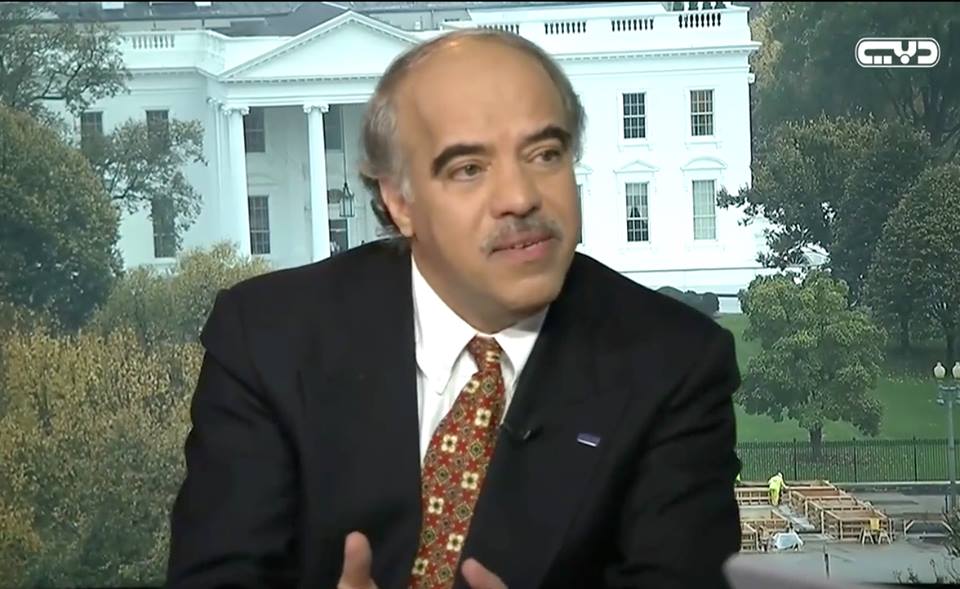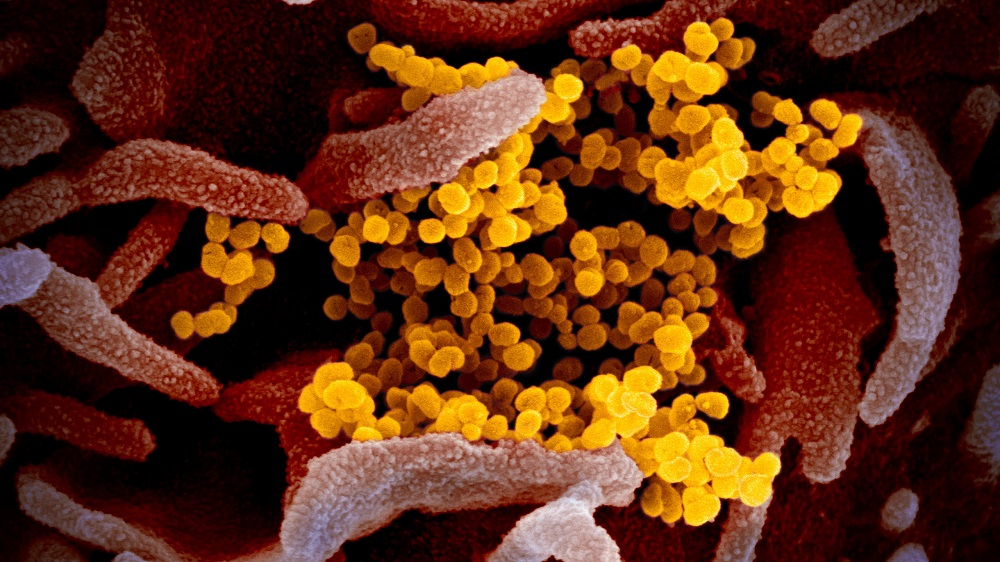
In a symbolic and rather ironic gesture, a Chinese aircraft landed in Rome, Italy, Europe’s epicenter of the Coronavirus spread, March 12, 2020, carrying nine medical experts and 31 tons of medical supplies, including intensive care unit, medical protective equipment, and antiviral drugs. Chinese businessman Jack Ma, founder of the Alibaba Group, offered to donate 500,000 coronavirus testing kits and one million masks to the United States, which declared a national emergency over the outbreak in the second week of March. China has been ‘the workshop of the world’, for that past three decades, since it has provided a quarter of the manufacturing in the world, as economics Nobel laureate Paul Krugman would say. Interestingly, China now has positioned itself to be the doctor and the lab of the West. For more two months now, the struggling efforts to contain Coronavirus in Europe and elsewhere are signaling the need for a paradigm shift in public health management, economic strategies, biosecurity and possible revision of neorealism, which simply means capitalism on steroids.
Earlier in February, Italy’s permanent representative to the European Union (EU), Maurizio Massari, had pleaded for help via the Emergency Response Coordination Centre. “We asked for supplies of medical equipment, and the European Commission forwarded the appeal to the member states. But, it didn’t work.”(1) The Centre serves as EU’s crisis hub, monitors natural and man-made disasters around the clock, administers the need of any EU member state - which cannot handle a crisis on its own- and forwards the appeal to other member states, which can then volunteer assistance.
The European negligence of Italy’s catastrophe, at the heart of the continent, has echoed a sentiment of resentment among Italians, who felt they had been let down by other EU member states several times; now and at the peak of the 2015 refugee crisis, when some 1.7 million individuals reached the EU southern territory. Massari’s statement implies some bitter taste of Europe’s lack of solidarity; he said, “The coronavirus crisis is similar to the refugee crisis: Countries that are not immediately affected are mostly not willing to help. Different countries obviously have different threat perceptions. We [Italy] feel that the coronavirus is a global and European threat that needs a European response, but other countries don’t see it that way.”(2)
Such a negative response in Brussels, the EU capital, has bewildered political observers, and triggered new questions about the purpose of the EU, once perceived as the most unified and most strategic post-state alliance in the world. Elisabeth Braw, director of the Modern Deterrence project at the Royal United Services Institute, has noticed fellow EU countries “have failed, in a shameful abdication of responsibility, to give medical assistance and supplies to Italy during an outbreak. China is filling the void.”(3)
European economic historians fear some déjà vu memories of the Black Death, which spread in the continent in the mid-14th century and led to the death of one third of the population. This reduction of demography caused scarcity of labor, increase in wages, decrease in inequality, and contested the then-feudal system in Europe. It also paved the way for the Industrial Revolution which Industrial Britain was hit by ‘King Cholera’ in 1831-32, 1848-49, 1854 and 1867. Tuberculosis also was responsible for the death of one-third of the casualties in Britain between 1800 and 1850. This nightmarish refrain comes back now stronger as epidemics have been ‘great equalizers’, and may initiate long-term implications nor only for European economic growth, but also for the world economy. After the US Federal Reserve decided to slash the benchmark interest rate to between zero and 0.25 percent (down from a range of 1 to 1.25 percent) and to buy $700 billion in Treasury bonds and mortgage-backed securities in a Sunday emergency meeting, the Dow Jones industrial average plunged 2,250 points at the open and trading suspended almost immediately the following day Monday, March 16.
The spread of Coronavirus, or Covid-19 virus, has brought the world to nearly a standstill. It has grounded world airlines, and represents an existential threat to many airlines. For instance, US President Trump’s 30-day ban on most flights to America from Europe, which took effect on March 14th, will erase the $20bn lucrative transatlantic routes made in sales last year. The real drama has expanded from the depiction of ghost towns in Hollywood movies into real ghost countries like Italy, Spain, and Germany. Several other countries have opted for forced quarantine of their population. We are at an era of self-imposed viral discrimination between the self and the other in the once-cozy social settings, work places, public gatherings, and even in churches, mosques and temples.
President Trump has framed the pandemic in xenophobic terms and made the wildly-irresponsible claim that “it will go away. Just stay calm. It will go away”. However, the new pandemic has revealed the most cynical aspects of neoliberalism. In a ‘Capitalism versus Coronavirus’ debate, the focus was on whether the American neoliberal model of capitalism makes the United States and its economy particularly ill-suited and ill-equipped to deal with a health crisis of the size of Coronavirus. Jeffery Sachs, Director of the Center for Sustainable Development at Columbia University, asserts, “We don’t have a public health system. We have a for-profit, private system. We have tens of millions of people that have no health coverage. We have no systematic testing. We are scrambling, and it has been weeks with this virus multiplying, with the pandemic spreading in the United States.”(4)
2020 will go into history books as a year that has exposed not only a public health failure, but has also indicated an era of geopolitical recession and a fall-from-grace moment of the neoliberal system in the new century. The unanticipated public health risk now can be reduced “neither to ethical virtues nor to a need for investments”; and “the crisis puts the flaws of our short-sighted, exploitative, hyper-individualistic times in glaring focus.”(5)
This two-part paper examines what I term a 3-C complexity: a) contextualization of the pandemic spread in 2020; b) correlation with the world finance markets instability and sudden drop in oil prices in mid-March, as Brent crude fell 12.2 percent, or $4.15, to trade at $29.68, its lowest level since January 2016; and c) concern about the future of neorealist capitalism. Part 1 probes into several dualities circulating now in the public sphere worldwide: is Coronavirus a ‘nature-made’ or ‘man-made’ pandemic? How scientific research can sort out the truth from various conspiratorial assumptions about a ‘deliberate’ causality and possible ‘manipulation’ of the virus in international politics? One fundamental question remains open about whether the international community and the whole United Nations system have balanced the highly-sought nuclear deterrence with some virus deterrence or minimum strategy of biosecurity. The paper also addresses a new trend of Trumpian electioneering and the pursuit of a German pharmaceutical company to develop an anti-Coronavirus Vaccine.
Part 2 of the paper will propose how Coronavirus has imposed a de facto trickle-across economics on the famous Reaganite trickle-down economics, or trickle-down theory, has shifted into negative economic entanglements. In New York the hot touristic hub of the world, Mayor Bill de Blasio ordered local bars and restaurants to close their doors in an effort to halt the spread of Coronavirus. He wrote in a message to his fellow New Yorkers March 16, “We must respond with a wartime mentality.” In Paris, French President Emmanuel Macron said in a somber address to his fellow citizens, “We are at war. We’re not up against another army or another nation. But the enemy is right there: invisible, elusive, but it is making progress.” He decided the army should be drafted in to help move the sick to hospitals.
In developing countries like Morocco and Philippines, where agriculture, tourism, and the financial remittances of their workers abroad represent the backbone of the national economy, there are indicators of a gloomy rest of the year since severe consequences of Coronavirus will kick in by June or July. On the whole, the United Nations’ trade and development agency, UNCTAD, foresees the current economic uncertainty and immobility will likely cost the global economy $1 trillion in 2020. The second part of the paper concludes the dominant neoliberal system is forcibly getting a reality check through a tiny virus. It argues for a human dimension and precedency of society before economy and profit in reconstructing an edited social democracy system, as a due correction of neoliberalism.
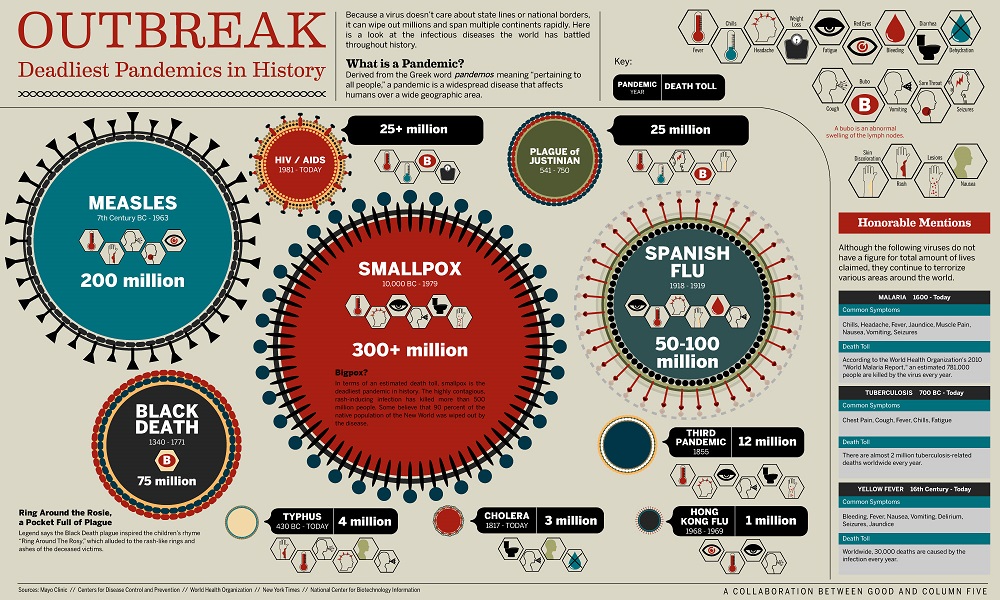
As an uncontrollable cross-border pandemic, Coronavirus is a new harrowing reminder of the fragility of human life; but, can be interpreted as the most democratic super disease of our time, with no discrimination on the basis of any particular race, geography, political ideology, wealth, or degree of development or underdevelopment. As one British commentator put it, “It spares neither Leave nor Remain, neither imam nor Chinese doctor, and respects no national border. So even as national leaders fall back on atavistic national responses, the dictates of science and reason have to surface – there is no other way forward.”(6)
The radius of contagions across the five continents seems to echo the morale of an article “The Microbe as a Social Leveller”, written by Cyrus Edson, the New York City health commissioner in 1895. Edson had marveled the reflections of 17th-century English communist Gerrard Winstanley, as he wrote that “the microbe of disease is no respecter of persons.” He explained that while impoverished people would be most at risk from disease, the rich would never be entirely safe from infection. For Edson, the “socialism of the microbe … is the chain of disease, which binds all the people of a community together.”(7)
During March in particular, wealthy nations in Europe, North America and the Gulf could not prevent new infection cases while poor nations were struggling with providing basic resources of water, sanitizers, and drugs for their citizens. Between January and March, Coronavirus was spreading at unimaginable velocities.
Creeping Numbers
By March 18, the World Health Organization (WHO) announced 200,106 confirmed cases, 8010 deaths, and 82,813 recovered in 167 countries. The scope of the Coronavirus spread has displayed some ironic areas of concentration. The list of countries with more than 200 confirmed cases includes: China 81048; Italy 21157; Iran 12729; South Korea 8086; Spain 5753; France 4469; Germany 3795; USA 1678; Switzerland 1359; United Kingdom 1144; Netherlands 959; Sweden 924; Norway 907; Denmark 827; Japan 780; Belgium 689; Austria 655; Qatar 337; Greece 227; Singapore 212; and Bahrain 211.(8) In China, nearly 60 million people were already subject to quarantine measures; and Italy became the European epicenter of the pandemic with the total of 21157 cases and 1441 deaths.
WHO had been reluctant to announce Coronavirus was “officially a pandemic”, and did not decide to bring the bad news until March 11. WHO defines a pandemic as “the worldwide spread of a new disease” (an epidemic is confined to “a community or region”). Director-General Dr. Tedros A. Ghebreyesus of the top health agency stated, “There is so much attention to that word. Other words matter more: prevention, preparedness, political leadership and people… We’re in this together."(9) As Laura Spinney, author of “Pale Rider: The Spanish Flu of 1918 and How it Changed the World”, points out, “After the 1918 flu outbreak killed 50 million, nations created new organizations to fight infection. But in an age of pandemics and renewed great power rivalry, they are no longer enough.”(10)
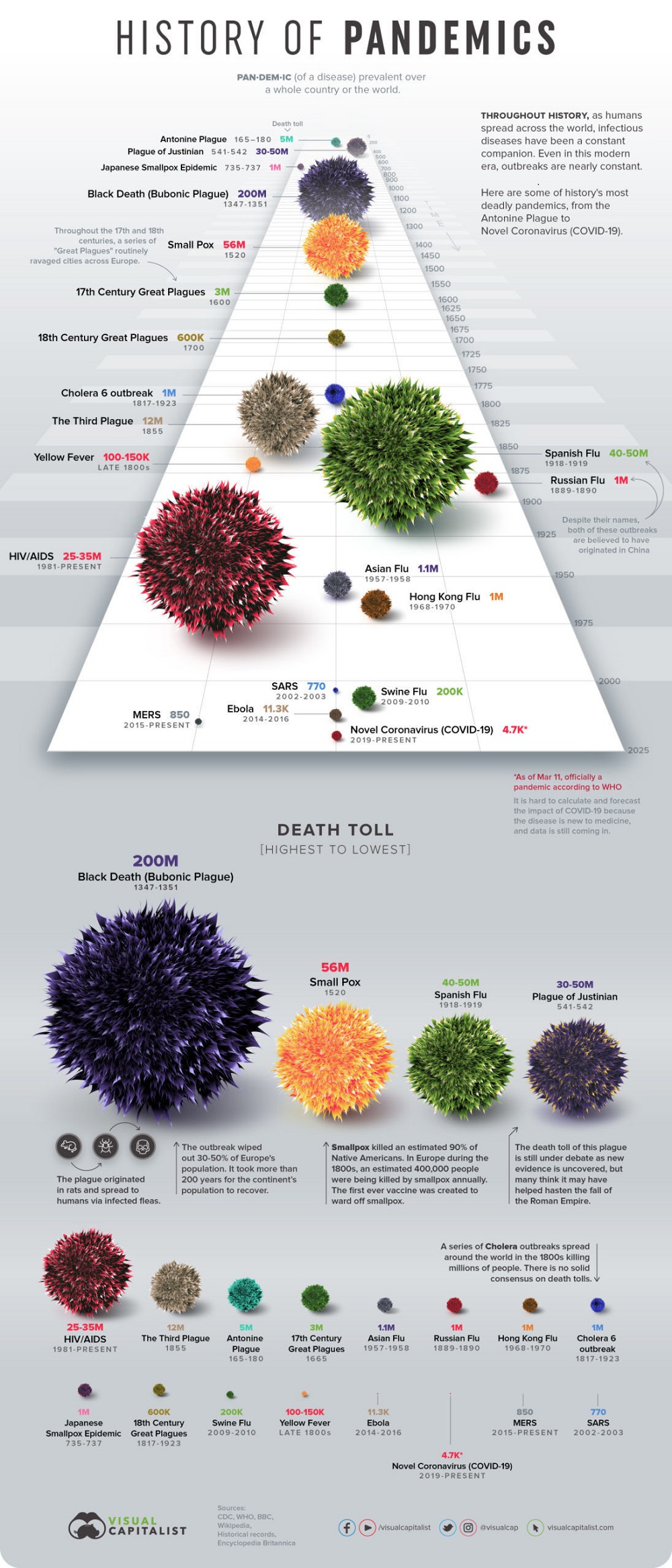
Across the Atlantic, the Coronavirus infection cases in the United States jumped from 1 case on January 22 to 2179 on March 13. This represents what is called an ‘exponential curve’, as the number of the cases doubles every two or three days, which would be one hundred million cases by May, according to the estimates of the Washington Post. Anthea Roberts and Nicolas Lamp, authors of an upcoming book “Winners and Losers: Narratives about Economic Globalization”, notice that instead of adopting a common frame to understand this threat, “actors are doubling down on their existing critiques of globalization and neoliberalism… Political observers view the coronavirus as a perfect illustration of the advantages or flaws of authoritarianism or democracy—pick your poison.”(11)
Since 2009, there have been five declarations of international public health emergencies: the swine flu pandemic in 2009, a polio outbreak in 2014, the Western Africa Ebola outbreak in 2014, the Zika virus outbreak in 2015 and another Ebola outbreak in the Democratic Republic of the Congo in 2019. Between 2011 and 2018, WHO detected 1,483 epidemic events in 172 countries. The Organization qualified them as signs of a new era of high-impact and swiftly spreading epidemics. It has also warned of the entirely credible threat of a respiratory pathogen ultimately provoking a global, biological calamity that “could claim some 50 to 80 million lives and destroy up to 5 percent of the world economy, besides causing social and political instability.”(12)
Pursuit of Scientific Data
At the age of fast Internet and social media, the world opinion has consumed a variety of virus misinformation and disinformation and internalized deep fear and anxiety. There have been allegations about the existence of ‘secret labs’, ‘government plots’, and implicit ‘manipulation’ of the virus in the U.S.-China geo-economic competition, and possibly an anti-Iran conspiracy. By March 16, the number of deaths in Iran topped 850, including Ayatollah Hashem Bathayi Golpayegani, a member of the clerical body that appoints the supreme leader, after testing positive for the new coronavirus and being hospitalized.
The overall panic has helped sell alarmist information. Samuel Scarpino, a business professor of network science at Northeastern University College of Science, points out, “A link between social contagions and real biological contagions are a feature of modern outbreaks because of misinformation and fake news.” So far, two dominant narratives have circulated the globe: China ‘manufactured’ the virus, and the United States ‘started’ the outbreak deliberately. Philip Reeker, senior State Department official in Washington, said "malign" Russian actors were attempting to sow disinformation about the origin of the coronavirus.
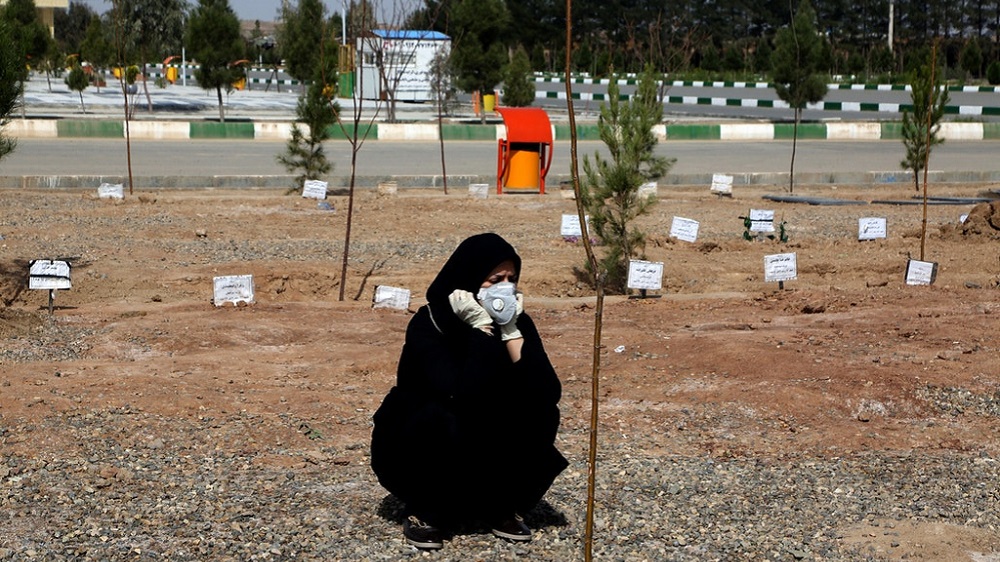
The public understanding of Coronavirus can be categorized into two main discourses: one is scientific, and the other is interpretive of certain incidents. From a scientific perspective, a recent ecologist study conducted in the Malaysian Borneo and China put the current coronavirus outbreak in China in a wholly new light. Scientists working with EcoHealth Alliance, a nonprofit research group, concluded the pandemic was "spillovers", which are instances of an animal virus jumping into a human. Disease ecologist Kevin Olival and his colleagues collected samples from thousands of bats in China. He explained “we found evidence for, in total, from all the sampling we did in China, about 400 new strains of coronaviruses."(13) Bats are known for carrying some dangerous ones, particularly viruses that have the potential to kick off global outbreaks.(14) One of the coronaviruses that the researchers found was a very close genetic match for the SARS virus.
Another EcoHealth Alliance ecologist, Hongying Li, highlighted there were any number of ways these people seemed at risk of inadvertently coming into contact with bat saliva, urine or poop. She said, "In some places, you could find bats roosting in people's homes. A lot of people reported, 'Once a bat flew into my house and I killed it' or 'Bats ate the fruits in my backyard.' "(15) Researchers at the Wuhan Institute of Virology and the Wuhan Jinyintan Hospital in China, who have worked closely with EcoHealth Alliance, compared the new virus with the bat samples they'd collected. They found an extremely close match. They released a detailed paper showing that the new coronaviruses' genetic makeup is “96 percent identical to that of a coronavirus found in bats.”(16)
Despite China’s alleged containment of the virus in Wuhan, there has been no clear-cut remedy while scientists race to find an effective vaccine. The Chinese authorities have advocated the use of traditional remedies. Patients are given a bag of brown soup -- a traditional Chinese remedy blended from over 20 herbs, including ephedra, cinnamon twigs and licorice root, alongside mainstream antiviral drugs, according to China’s Ministry of Science and Technology. However, a team of experts at London's Imperial College published a new document and warned the current public health threat is the "most serious" from a respiratory virus since the Spanish Flu in 1918. They advised the UK government adopts a strategy of "epidemic suppression" - for a period of potentially 18 months or more - rather than "mitigation". Such mitigation strategy revealed that the British National Health Service capacities “could be exceeded by at least eightfold - and about 250,000 people could die.”(17)
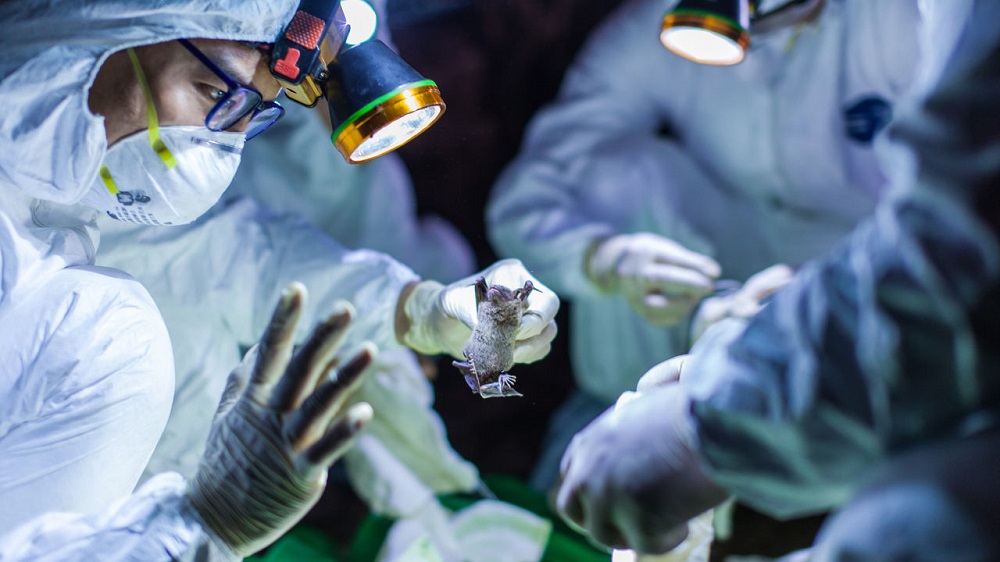
In the United States, the Centre for Disease Control and Prevention (CDC) asserts Coronaviruses are “a large family of viruses that are common in people and many different species of animals, including camels, cattle, cats, and bats. Rarely, animal coronaviruses can infect people and then spread between people such as with MERS-CoV, SARS-CoV, and now with this new virus, named ‘SARS-CoV-2’. The SARS-CoV-2 virus is a betacoronavirus, like MERS-CoV and SARS-CoV. All three of these viruses have their origins in bats.”(18) CDC also concluded “this is the first pandemic known to be caused by the emergence of a new coronavirus. In the past century, there have been four pandemics caused by the emergence of novel influenza viruses.”(19)
Dr. William Schaffner, a professor at Vanderbilt University School of Medicine and longtime adviser to the CDC explains how the spread of Coronavirus has been solidified by two major factors: “Asymptomatic transmission and mildly symptomatic transmission”; and considers them “the drivers of spread in the community."(20) Other scientists have ranked the Coronavirus lethality at 2 percent compared with 10 percent of SARS. However, military historian and world affairs author, Joseph V. Micallef, highlights coronavirus has never been encountered before. He wrote, “Like other coronaviruses, it is a zoonotic disease: an infectious disease caused by bacteria, viruses, and parasites that spread from non-human animals (usually vertebrates) to humans. Many of those initially infected either worked or frequently shopped in the Wuhan seafood wholesale market.”(21)
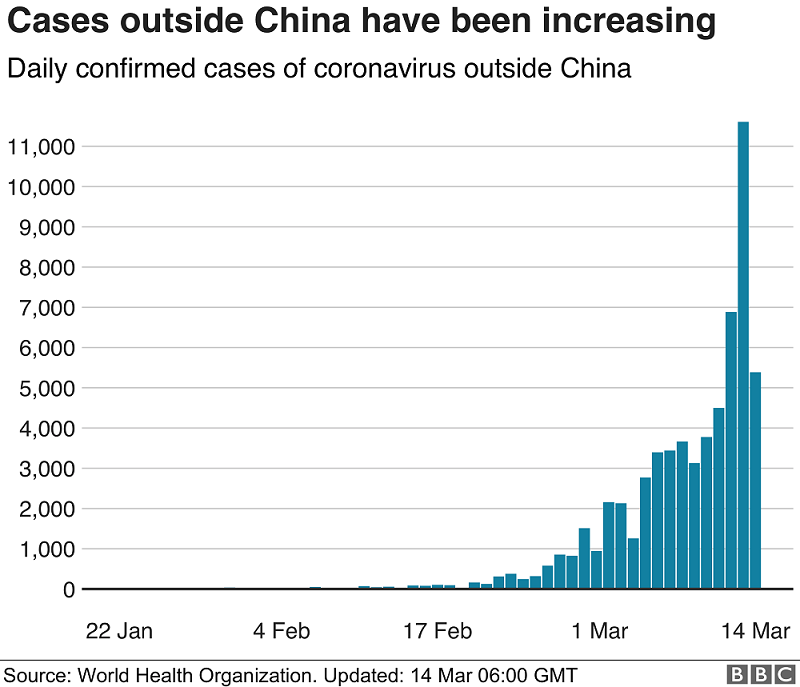
Coronavirus’s Conspiratorial Interpretations
A number of literary works have come back to the limelight at the peak of Coronavirus spread. One of them is “The Eyes of Darkness” published in 1981. The author Dean Koontz mentions a deadly virus called the “Wuhan 400,” which he described as a “severe pneumonia-like illness” that spreads attacking “the lungs and bronchial tubes” and “resisting all known treatments.”(22) Dombey, one of the main characters of the novel, narrates a story about a Chinese scientist who brought a biological weapon called "Wuhan-400" to the United States: "To understand that," Dombey said, "you have to go back twenty months. It was around then that a Chinese scientist named Li Chen defected to the United States, carrying a diskette record of China's most important and dangerous new biological weapon in a decade. They call the stuff 'Wuhan-400' because it was developed at their RDNA labs outside the city of Wuhan, and it was the four-hundredth viable strain of man-made microorganisms created at that research center."
One should highlight the distance between fiction and reality. However, a number of China politics observers and Western military officials have claimed a strong link between Coronavirus and recent research conducted at the Wuhan Institute of Virology. Some have argued Coronavirus is one thing and the “dark secrets”, being developed in biowarfare labs around the world, are quite another. Moreover, there has a pattern of ethnicizing the new virus as the “Chinese virus” in Western media and publications.
The WHO China office heard the first reports of a previously-unknown virus behind a number of pneumonia cases in Wuhan December 31, 2019. The main narrative then alluded to the possibility that the new virus could have originated from a Wuhan seafood market, where wild animals, including marmots, birds, rabbits, bats and snakes, were traded illegally. After meeting Tedros A. Ghebreyesus, Director-General of WHO at the Great Hall of the People on Beijing’s Tiananmen Square, a symbol of the Chinese Communist Party’s political might, on 28 January 2020, Chinese President Xi Jinping stated “the epidemic is a devil. We cannot let the devil hide.”(23) By February 15, the Chinese Ministry of Science and Technology released a new directive titled: “Instructions on strengthening biosecurity management in microbiology labs that handle advanced viruses like the novel coronavirus.” As of March 11, Chinese health authorities acknowledged over 81,032 cases and 3,204 deaths
Steven Mosher, president of the Population Research Institute and author of “Bully of Asia: Why China’s ‘Dream’ Is the New Threat to World Order”, remains skeptical about what was behind Xi Jinping’s urgent call for setting up a national system to control biosecurity risks “to protect the people’s health”, since lab safety is a “national security” issue, one week after his statement about “the need to contain the coronavirus” February 15. Mosher also believes China has had a problem “keeping dangerous pathogens in test tubes where they belong, doesn’t it? And just how many “microbiology labs” are there in China that handle “advanced viruses like the novel coronavirus”?”(24) President of the Population Research Institute calls for some deductive reasoning of Wuhan being the birth place of Coronavirus. He argues “It turns out that in all of China, there is only one. And this one is located in the Chinese city of Wuhan that just happens to be … the epicenter of the epidemic. That’s right. China’s only Level 4 microbiology lab that is equipped to handle deadly coronaviruses, called the National Biosafety Laboratory, is part of the Wuhan Institute of Virology.”(25)
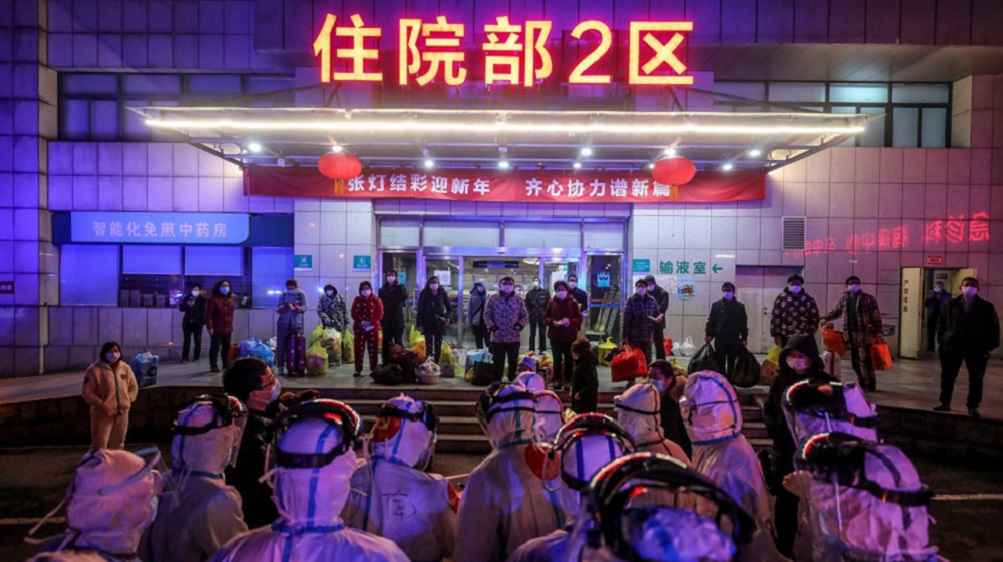
Reports have indicated the People’s Liberation Army’s top expert in biological warfare, a Maj. Gen. Chen Wei, was dispatched to Wuhan at the end of January to help with the effort to contain the outbreak. According to the PLA Daily, Chen has been researching coronaviruses since the SARS outbreak of 2003, as well as Ebola and anthrax. This would not be her first trip to the Wuhan Institute of Virology, either, since it is one of only two bioweapons research labs in all of China. However, Mosher argues the deadly SARS virus has escaped twice from the Beijing lab; and both “man-made” Corona and SARS epidemics were quickly contained, but neither would have happened at all if proper safety precautions had been taken.
Ivo Daalder, president of the Chicago Council on Global Affairs and a former U.S. ambassador to NATO, has criticized China for its “secrecy and inaction”, which turned the possibility of an epidemic into a reality.(26) He recalls doctors in Wuhan, an industrial city of 11 million people, noticed, by the end of December 2019, an increased number of sick people with symptoms similar to the SARS outbreak that had killed nearly 800 people in 2002-03. The patients were quarantined, and the Wuhan health commission issued a public notice stressing no cause for alarm. The infections were traced to a live-animal food market, which was shut down on January 1, and the genetic sequence of a new coronavirus was identified two days later.
Consequently, Daalder’s Op-Ed piece triggered some uproar with Chinese officials. Zhao Jian, China’s consul general in Chicago, sent a letter to the editor of the Chicago Tribune, accusing Daalder of “inaccuracies and bias.”(27) Chinese diplomacy has been mobilized in the West to control the narrative, and to promote the idea that the Communist Party’s response to the outbreak has in fact been transparent and effective. The Chinese Embassy in London accused the Economist of “hold[ing] a prejudice against China’s political system.” In Paris, the Chinese Embassy said that, in some media outlets, “the reflex criticism of everything Chinese is bordering on paranoia.” In Berlin, Chinese diplomats accused the media of “continuing to stir up and spread panic.” Ironically, China’s Embassy In Copenhagen demanded that the Jutland Post, the best-selling newspaper in Denmark, “publicly apologize to the Chinese people” for publishing a cartoon depicting a Chinese flag with illustrations of a virus instead of stars.(28)
Western observers have been skeptical about China’s over-secrecy about the dynamics of the Coronavirus spread and mass mobilization of interlocutors to impose an official, but less credible, narrative. Lucrezia Poggetti, EU-China relations analyst at the Mercator Institute for China Studies points out “the Communist Party clamped down on information shared about the disease and dispatched more than 300 people to generate positive news stories around the outbreak.”(29) Others have warned of missing information from China. For instance, Anthony Fauci, director of the U.S. National Institute of Allergy and Infectious Diseases, pointed to the gap, and questioned the difference between “numbers that are given to you in a press conference as opposed to numbers [where] you can actually look at the data.”
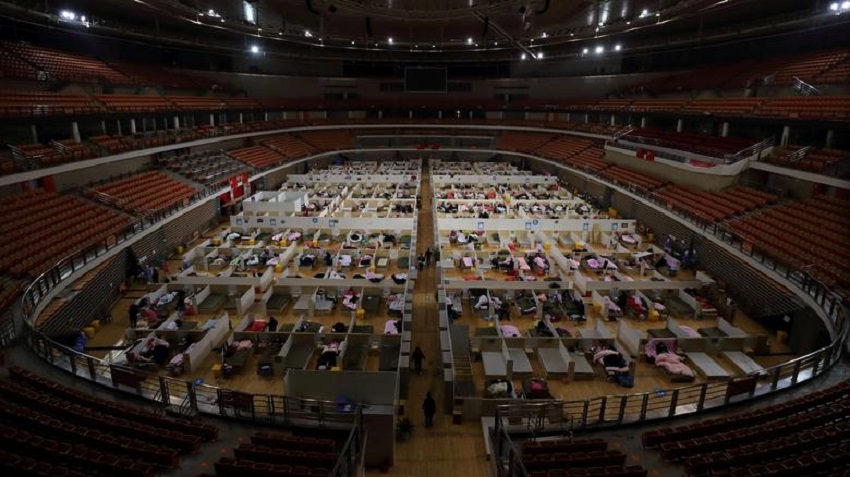
Anti-Coronavirus Vaccine and Trumpian Electioneering
In an interesting twist in the world campaign against the new pandemic, the science of Coronavirus has turned into a new battle of knowledge and brain drain, and a new trend of Trumpian profiteering. Members of the German government have expressed resentment to the news President Trump had offered $1bn to Tübingen-based biopharmaceutical company, CureVac, to secure the vaccine “only for the United States”.(30) CureVac was founded in 2000 and specializes as in “development of treatments against cancer, antibody-based therapies, treatment of rare illnesses and prophylactic vaccines.”(31)
Christian Lindner, leader of the liberal FDP party, accused President Trump of electioneering, “Obviously Trump will use any means available in an election campaign.” Moreover, German economy minister Peter Altmaier pointedly stated “Germany is not for sale.” His colleague foreign minister Heiko Maas told the Funke Mediengruppe research network “German researchers are taking a leading role in developing medication and vaccines as part of global cooperation networks. We cannot allow a situation where others want to exclusively acquire the results of their research.”(32)
Consequently, Washington has sought to calm the uproar. A US official stated “the US government has spoken with many [more than 25] companies that claim they can help with a vaccine. Most of these companies already received seed funding from US investors.”(33) CureVac investors decided not to sell the vaccine to a single state; and the principle investor dievini Hopp BioTech holding stated “If we are successful in developing an effective vaccine, then it should help and protect people across the world.” Trump’s pursuit of electioneering any Coronavirus vaccine has solidified the rumors circulating possible deliberate production of the virus in a lab for strategic goals.
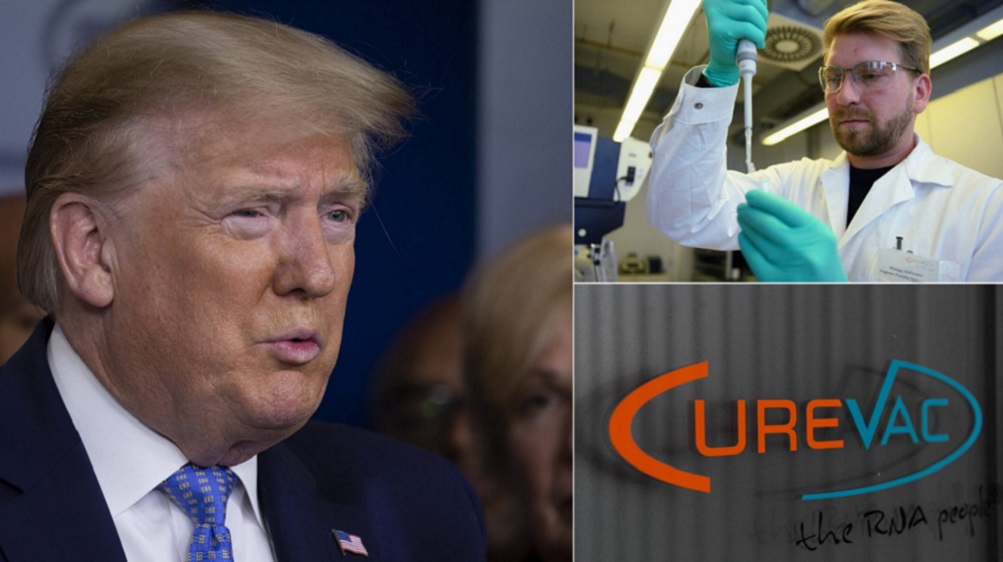
So far, some promising news have emerged about a possible breakthrough in designing a drug to fight the pandemic. China’s Science and Technology Ministry has announced a new drug known as ‘Favipiravir’, and developed by a subsidiary of Japanese Fujifilm Toyama Chemical, had produced encouraging outcomes in clinical trials involving 340 patients in Wuhan and Shenzhen. In Australia, disease experts at the University of Queensland in Brisbane are excited about two existing medications that would eradicate the Coronavirus infections: Chloroquine, an anti-malarial drug, and HIV-suppressing combination lopinavir/ritonavir.
There is no certainty yet about the validity of these medical experiments while 35 companies and academic institutions are racing to create a potential vaccine. The common wisdom among most medical experts is a mere hope that the development of a Coronavirus vaccine will need between 12 to 18 months. Trump has pressed for a vaccine to be ready in November, the due date of the US presidential elections. However, it remains an impossible deadline. Annelies Wilder-Smith, professor of emerging infectious diseases at the London School of Hygiene and Tropical Medicine explains, “Like most vaccinologists, I don’t think this vaccine will be ready before 18 months.”
Part 2 of the paper will address three main themes: Coronavirus’s ‘Trickle-Across’ economics, politicization of Coronavirus in international relations, and embarrassed Neoliberalism and return to the human dimension. It will be published in a few days.
(1) Elizabeth Braw, “The EU Is Abandoning Italy in Its Hour of Need”, Foreign Policy, March 14, 2020 https://foreignpolicy.com/2020/03/14/coronavirus-eu-abandoning-italy-china-aid/
(4) Ali Hasan, “Capitalism versus Coronavirus, The Intercept, March 12, 2020 https://theintercept.com/2020/03/12/capitalism-vs-the-coronavirus/
(5) Karin Pettersson, “The corona crisis will define our era”, Social Europe, March 16, 2020 https://www.socialeurope.eu/the-corona-crisis-will-define-our-era
(6) Will Hutton, “Coronavirus won’t end globalisation, but change it hugely for the better,” The Guardian, March 8, 2020 https://www.theguardian.com/commentisfree/2020/mar/08/the-coronavirus-outbreak-shows-us-that-no-one-can-take-on-this-enemy-alone
(7) New Frame Editorial, “Coronavirus and the crisis of capitalism”, New Frame, March 16, 2020 https://www.newframe.com/coronavirus-and-the-crisis-of-capitalism/
(8) WHO, “Novel Coronavirus (COVID-19) Situation” March 15, 2020 https://experience.arcgis.com/experience/685d0ace521648f8a5beeeee1b9125cd
(9) World Economic Forum, “Coronavirus is officially a pandemic - but we can change its course: Today's WHO briefing”, March 11, 2020 https://www.weforum.org/agenda/2020/03/coronavirus-is-official-a-pandemic-but-we-can-change-its-course-who-briefing/
(10) Laura Spinney, “Coronavirus and the Geopolitics of Disease”, The Statesman, February 19, 2020 https://www.newstatesman.com/politics/health/2020/02/coronavirus-and-geopolitics-disease
(11) Anthea Roberts and Nicolas Lamp, “Is the Virus Killing Globalization? There’s No One Answer”, Barron’s, March 15, 2020 https://www.barrons.com/articles/is-the-virus-killing-globalization-theres-no-one-answer-51584209741
(12) Mariano Turzi, “Coronavirus: The Weight Of Geopolitics And Macroeconomics”, Worldcrunch, March 4, 2020 https://www.worldcrunch.com/world-affairs/coronavirus-the-weight-of-geopolitics-and-macroeconomics
(13) Nurith Aizenman, “New Research: Bats Harbor Hundreds Of Coronaviruses, And Spillovers Aren't Rare”, NPR, February 20, 2020 https://www.npr.org/sections/goatsandsoda/2020/02/20/807742861/new-research-bats-harbor-hundreds-of-coronaviruses-and-spillovers-arent-rare
(17) Greg Heffer, “Coronavirus: PM moves UK to 'suppression' after new analysis of COVID-19 death rate”, Sky, March 17, 2020 https://news.sky.com/story/coronavirus-govt-ramped-up-measures-after-new-prediction-of-250-000-deaths-11958680
(18) CDC, Situation Summary, March 15, 2020 https://www.cdc.gov/coronavirus/2019-ncov/cases-updates/summary.html
(20) Elizabeth Cohen “Infected people without symptoms might be driving the spread of coronavirus more than we realized”, CNN, March 14, 2020 https://edition.cnn.com/2020/03/14/health/coronavirus-asymptomatic-spread/index.html
(21) Joseph V. Micallef, The Geopolitics of the Coronavirus, Military.com, February 25, 2020 https://www.military.com/daily-news/2020/02/25/geopolitics-coronavirus.html
(22) Brian Ives, “Dean Koontz: Did He Predict The Coronavirus In ‘The Eyes Of Darkness’ In 1981?”, March 14, 2020 https://wmmr.com/2020/03/14/dean-koontz-did-he-predict-the-coronavirus-in-eyes-of-darkness-1981/
(23) Laura Spinney, “Coronavirus and the Geopolitics of Disease”, The Statesman, February 19, 2020 https://www.newstatesman.com/politics/health/2020/02/coronavirus-and-geopolitics-disease
(24) Steven W. Mosher, “Don’t buy China’s story: The coronavirus may have leaked from a lab”, The New York Post, February 22, 2020 https://nypost.com/2020/02/22/dont-buy-chinas-story-the-coronavirus-may-have-leaked-from-a-lab/
(25) Steven W. Mosher, “Don’t buy China’s story: The coronavirus may have leaked from a lab”, The New York Post, February 22, 2020 https://nypost.com/2020/02/22/dont-buy-chinas-story-the-coronavirus-may-have-leaked-from-a-lab/
(26) Ivo Daalder, “Commentary: China’s secrecy has made the coronavirus crisis much worse”, Chicago Tribune, February 13, 2020, https://www.chicagotribune.com/opinion/commentary/ct-opinion-china-coronavirus-epidemic-secrecy-daalder-20200213-xs5uhj2lqverbde6aprxldh5q4-story.html
(27) Annabelle Timsit, “China is mobilizing to control the narrative on coronavirus”, Quartz, March 5, 2020 https://qz.com/1812162/china-mobilizes-against-medias-malicious-coronavirus-coverage/
(30) “Coronavirus: anger in Germany at report Trump seeking exclusive vaccine deal,” The Gurdian, march 16, 2020 https://www.theguardian.com/world/2020/mar/16/not-for-sale-anger-in-germany-at-report-trump-seeking-exclusive-coronavirus-vaccine-deal
(31) “Coronavirus: anger in Germany at report Trump seeking exclusive vaccine deal,” The Gurdian, march 16, 2020 https://www.theguardian.com/world/2020/mar/16/not-for-sale-anger-in-germany-at-report-trump-seeking-exclusive-coronavirus-vaccine-deal
(32) “Coronavirus: anger in Germany at report Trump seeking exclusive vaccine deal,” The Gurdian, march 16, 2020 https://www.theguardian.com/world/2020/mar/16/not-for-sale-anger-in-germany-at-report-trump-seeking-exclusive-coronavirus-vaccine-deal
(33) “Coronavirus: anger in Germany at report Trump seeking exclusive vaccine deal,” The Gurdian, march 16, 2020 https://www.theguardian.com/world/2020/mar/16/not-for-sale-anger-in-germany-at-report-trump-seeking-exclusive-coronavirus-vaccine-deal
